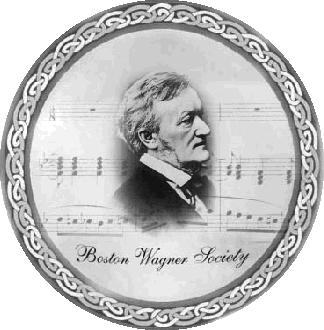Wagner’s Life on the Silent Silver Screen: Two Reviews of “The Life of Richard Wagner”
Like the Dutchman’s ship, a relic of the past trailing innumerable questions in its wake, the 1912 silent film The Life of Richard Wagner flashed vividly on the screen at the Boston Public Library on Sunday, February 13, before disappearing once again to an uncertain fate.
Dr. Paul Fryer, lecturer in theater, film critic, and historian, introduced the film with information about its near-miraculous survival and the complete absence of supporting documentary material on the process of its production. Two innovative giants of early German cinema, Producer Oskar Messter and Director Carl Fröhlich, made an 80-minute feature-length “biopic,” of which 69 minutes survive without the original score. There was no involvement by the Wagner family beyond an exorbitant fee demanded for the use of Wagner’s music.
Giuseppe Becce, an Italian composer living in Berlin, was engaged to write a Wagner-free score and, due to an astonishing resemblance to the composer, was later tapped to play Wagner himself.
Production values, including sumptuous costumes and settings, innovative location shots, and special effects, denote money and care expended on the project. No shooting script survives to indicate the content of the missing minutes, but surely the absent Lohengrin and Wagner’s early years with Cosima were dealt with.
Or maybe not. Mathilde Wesendonck is bowdlerized into Wagner’s platonic muse, and Wagner hardly looks at women other than his two wives. Fryer suspects that Wagner’s seduction of Cosima and other racy details of his private life may have been suppressed, as Cosima was still alive and a major force on the German cultural scene.
The acting is surprisingly subtle for the period. Becce is quite eloquent as Wagner. Scenes of crisis revert to the more melodramatic acting style familiar from most early silent films. Re-creations of moments from Wagner’s premieres are perhaps the most interesting aspect of the entire production. Done with period-specific re-creations of flat painted scenery and obviously theatrical costumes, they are acted in a style as close as we’ll probably ever get to what Wagner himself saw and asked of his singers onstage.
Sadly, projects like this one, as Dr. Fryer revealed, inspire little interest even from the niche audience of the Wagner obsessed. Nevertheless, although attendance on the 13th was sparse, appreciation was very high.
– William Fregosi
William Fregosi is technical coordinator for theater arts at MIT and a member of the Boston Wagner Society.
Since the very beginning of the film industry, the lives of celebrities have been a popular source of movie material. The tumultuous life of Richard Wagner has been made into several “biopics,” including the 1956 Hollywood movie Magic Fire and the nine-hour 1983 BBC miniseries Wagner, starring Richard Burton. Considerably less detailed than the latter but more entertaining is The Life of Richard Wagner.
Most Wagner fans won’t learn any new information from this capsule view of the composer’s life, but film buffs will enjoy one of the most sophisticated silent films of its era. Director Carl Fröhlich, an innovator in the use of artificial lighting, employs elaborate indoor sets, as well as authentic costumes and locations. A re-creation of the Dresden uprising of 1849 is surprisingly large in scale, and Fröhlich’s trademark use of camera movement is put to good effect in depicting Wagner’s stormy ship journey from Riga to London.
Playing Wagner is fellow composer Giuseppe Becce, who was originally hired to compose a Wagner-esque score for the film (exorbitant royalty demands from Wagner’s estate made this impossible). Becce’s score is now lost, but composer Barry Seaman has come up with a pleasant and mostly unobtrusive orchestral replacement. A harp interlude accompanying a staged excerpt from Siegfried (one of several staged scenes from Wagner’s operas interspersed throughout the film) is an appropriate touch.
The film has moments of humor, such as composer Giacomo Meyerbeer politely imploring Wagner to cut short a parlor demonstration of one of his earliest and lengthiest operas, Rienzi (Meyerbeer, in his successful recommendation of Rienzi to the Dresden Court Opera, described it as “unique”), and a visibly unimpressed audience reacting with silent confusion to the premiere of Der fliegende Holländer.
Despite the occasional ribbing, there is no question that Wagner’s life is glorified—and sanitized. His love affair with Mathilde Wesendonck, the wife of his patron at the time, is portrayed as a harmless crush he pursued only in his imagination through Tristan und Isolde; and his scandalous early relationship with the already-married Cosima von Bülow, including the illegitimate births of their two children, is omitted entirely (though the loss of 11 minutes of footage from the original film might account for this omission). The final scene of the film is a virtual canonization, showing worshipful admirers bowing before Wagner’s image at his Villa Wahnfried gravesite in Bayreuth.
Still “a work in progress,” according to Dr. Fryer, the film will feature larger and easier-to-read titles in the near future. Dr. Fryer, who previously presented the film to Wagner societies in New York and Washington, D.C., will be presenting it again in Seattle on May 22.
– Delia Lyons
